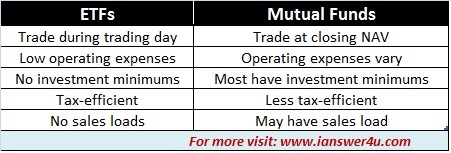Investing in the stock market can be a daunting task, especially for those who are new to the world of finance. With so many investment options available, it’s important to find a strategy that suits your investment goals and risk tolerance. One such option that has gained popularity in recent years is utility fund exchange-traded funds (ETFs).
In this article, we will delve into the world of utility fund ETFs and explore why they are worth considering for your portfolio.
Definition and Explanation of a Utility Fund ETF
A utility fund ETF is an investment vehicle that allows investors to gain exposure to the utilities sector through a diversified portfolio of stocks. These funds track an index composed of utility companies, providing easy access to this specific sector.
By investing in a utility fund ETF, individuals can benefit from instant diversification, lower management fees, and the flexibility to buy or sell shares throughout the trading day. Overall, utility fund ETFs offer a convenient and efficient way for investors to participate in the utilities sector while minimizing risk.
How Utility Fund ETFs Differ from Other Types of Funds
Utility fund ETFs stand out from other funds in several ways. Firstly, they exclusively focus on the utilities sector, which includes companies providing essential services like electricity and water. This specialization allows investors to target their investments towards a specific sector of interest.
Additionally, utility fund ETFs offer diversification by including multiple utility companies in their portfolios. This helps spread investment risk and provides stability during market fluctuations.
These funds also provide liquidity as they can be bought or sold throughout the trading day at market prices. This flexibility allows investors to react quickly to changing market conditions.
Furthermore, utility fund ETFs often offer attractive dividend yields due to the regular distribution of dividends by utility companies with stable cash flows.
In summary, utility fund ETFs differentiate themselves through their exclusive focus on utilities, diversification benefits, liquidity, and potential for regular dividend income.
Stable and Consistent Returns
Utility funds have a strong track record of delivering stable and consistent returns. The utilities sector, which provides essential services regardless of economic conditions, contributes to this reliability.
Compared to individual utility stocks or actively managed mutual funds, utility fund ETFs offer a hassle-free way to invest in the sector with instant diversification and lower fees. These funds provide a dependable option for investors seeking stability in their portfolios.
Diversification and Risk Management
Investing in utility fund ETFs offers investors the opportunity to effectively diversify their portfolios and manage risk. By spreading risk across multiple utilities companies, these ETFs help mitigate the impact of poor performance by any individual company on the overall investment.
One of the key advantages of utility fund ETFs is their ability to provide diversification. Instead of investing in a single utilities company, which exposes investors to the risks associated with that specific company, utility fund ETFs offer exposure to a basket of utilities companies.
This diversified approach helps minimize the negative effects that may arise from any one company’s underperformance.
In addition to diversification, utility fund ETFs also act as a hedge against market volatility. Utility companies are often considered defensive investments due to their stable cash flows and consistent demand for their services.
During times of market turbulence, when other sectors may experience significant fluctuations, utility funds tend to exhibit more stability.
By including utility fund ETFs in an investment portfolio, investors can reduce the overall risk exposure and potentially achieve more stable returns over time. These funds provide a balance between growth potential and stability, making them an attractive option for those seeking long-term wealth preservation.
It’s important to note that not all utility funds are created equal. Investors should carefully evaluate factors such as expense ratios, holdings diversification, and historical performance before choosing a specific utility fund ETF.
Conducting thorough research and consulting with a financial advisor can help ensure that the selected fund aligns with one’s investment goals and risk appetite.
Overall, through diversification and hedging against market volatility, investing in utility fund ETFs can be an effective strategy for managing risk while seeking steady returns in both bullish and bearish market conditions.
Holdings and Allocation in Utility Companies
Utility fund ETFs diversify their holdings across electric, gas, and water sectors within the utilities industry. Well-known utility companies like NextEra Energy and Duke Energy are commonly included in the electric sector, while Dominion Energy and Kinder Morgan feature prominently in gas holdings.
Water utility firms such as American Water Works Company and Aqua America Inc. are also targeted. This strategic allocation allows investors to tap into essential services while balancing risks and maximizing potential returns.
Factors Influencing Performance and Returns
The performance and returns of utility fund ETFs are influenced by several key factors. Regulatory environments and government policies affecting the utilities sector play a significant role. Changes in regulations or government initiatives can impact the profitability and growth potential of utility companies.
Economic conditions also shape the performance of utility fund ETFs. During periods of economic growth, there is typically increased consumer demand for utilities services, positively impacting the earnings of utility companies.
Market factors such as interest rates and inflation levels can affect utility funds. Additionally, technological advancements within the utilities sector, such as the adoption of renewable energy sources, can impact performance and returns.
To summarize, regulatory environments, government policies, economic conditions, market factors, and technological advancements collectively influence the performance and returns of utility fund ETFs.
Which companies are included in utility ETFs?
Investors looking to invest in utility fund ETFs need to understand which companies are included within this sector. To identify these companies, it is essential to conduct thorough research on the prominent players in each subsector of utilities, such as electric, gas, and water.
In the electric subsector, well-known utility companies include industry giants like NextEra Energy, Duke Energy, and Dominion Energy. These companies have a significant market presence and are often included in utility ETFs due to their stable revenues and consistent performance.
Within the gas subsector, companies like Sempra Energy, Southern Company Gas, and Atmos Energy Corporation are commonly found in utility ETF portfolios. These firms provide natural gas services across various regions and have a strong track record of delivering reliable profits.
Water utilities form another crucial subsector within the broader utilities industry. American Water Works Company Inc., Aqua America Inc., and California Water Service Group are among the leading water utility companies included in many utility ETFs.
These companies operate water treatment plants, distribution systems, and wastewater facilities while offering essential services to communities nationwide.
When evaluating the inclusion of potential utility companies within different utility ETFs, it is important for investors to consider their investment goals. Each fund may have specific criteria for selecting companies based on factors like market capitalization, dividend yield, or geographic diversification.
Therefore, it is crucial for investors to ensure that the chosen companies align with their investment objectives before making any decisions.
The Best Utility ETFs for Investment Purposes
When it comes to investing in utility exchange-traded funds (ETFs), there are several factors that investors should consider to make the most informed decisions. One crucial aspect is comparing the performance, expense ratios, and holdings of different utility fund ETFs.
By analyzing the historical performance of these funds, investors can gain valuable insights into how they have performed in the past and assess their potential for future returns. Additionally, examining expense ratios is important as it helps investors understand the costs associated with owning a particular fund.
Lower expense ratios can lead to higher net returns over time.
Furthermore, evaluating the holdings of utility fund ETFs is essential to ensure alignment with one’s investment goals. Understanding which companies or assets these funds hold can shed light on their risk profiles and potential for stable income generation or long-term capital appreciation.
However, it’s important to note that selecting the best utility fund ETF goes beyond these quantitative aspects alone. Investors must also assess their individual investment goals and risk tolerance when considering these funds’ suitability.
Some investors may prioritize stable income generation from utility companies that consistently pay dividends, making them ideal for those seeking reliable cash flow.
On the other hand, individuals with a focus on long-term capital appreciation might opt for utility fund ETFs that hold companies involved in renewable energy or innovative technologies within the utilities sector.
[lyte id=’B7_xV8ryQx0′]






